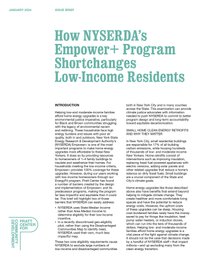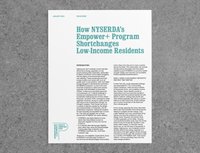
The Empower+ program, run by New York State’s Energy Research and Development Authority (NYSERDA), was created to make energy efficiency more affordable to low- and moderate-income homeowners in New York. It does this by fully or partially subsidizing the cost of home energy upgrades. But due to a narrow set of eligibility criteria and onerous application requirements, NYSERDA ends up excluding large numbers of low-income, Black and Brown communities from receiving these benefits, especially in New York City. This brief examines two barriers—that NYSERDA can easily address—that make the Empower+ program far less impactful and equitable than it could be.
BACKGROUND
Helping families afford home energy upgrades is a key environmental justice imperative, particularly for Black and Brown communities struggling with the legacy of environmental racism and redlining. These households face high energy burdens and issues with poor air quality, both in and outdoors.
NYSERDA’s Empower+ is one of the most important programs to make home energy upgrades more affordable to low-and moderate-income New Yorkers. It does so by providing resources to homeowners of 1–4 family buildings to insulate and weatherize their homes. For households meeting the low-income criteria, Empower+ provides 100% coverage for these upgrades.
But data from NYSERDA shows the Empower+ program is not actually reaching low-income households in New York City. Since 2010, only 7% of NYSERDA’s small residential retrofits have occurred in NYC, despite the city housing almost half of the state’s population and having over 863,000 1-4 family buildings.
Up until recently, there were two ways of qualifying for the low-income incentive. The most common way is through income verification, in which households submit documentation proving they make less than 60% of the State Median Income (SMI). The second way to qualify, which was abruptly discontinued days before publication of this report, was through a geo-eligibility pilot, in which families living in certain low-income census tracts automatically qualified for Empower+ incentives without verifying their income. This report examines elements of these two eligibility criteria that end up excluding hundreds of thousands of low-income NYC families from benefiting from the low-income incentive, and result in inequitable gaps in program delivery across New York State.
FINDINGS
NYSERDA’s use of State Median Income (SMI) to determine “low-income” eligibility—even though most other housing programs use Area Median Income (AMI)—means that many low-income households in higher-income areas of the State, most prominently New York City, cannot qualify for Empower+ low-income benefits.
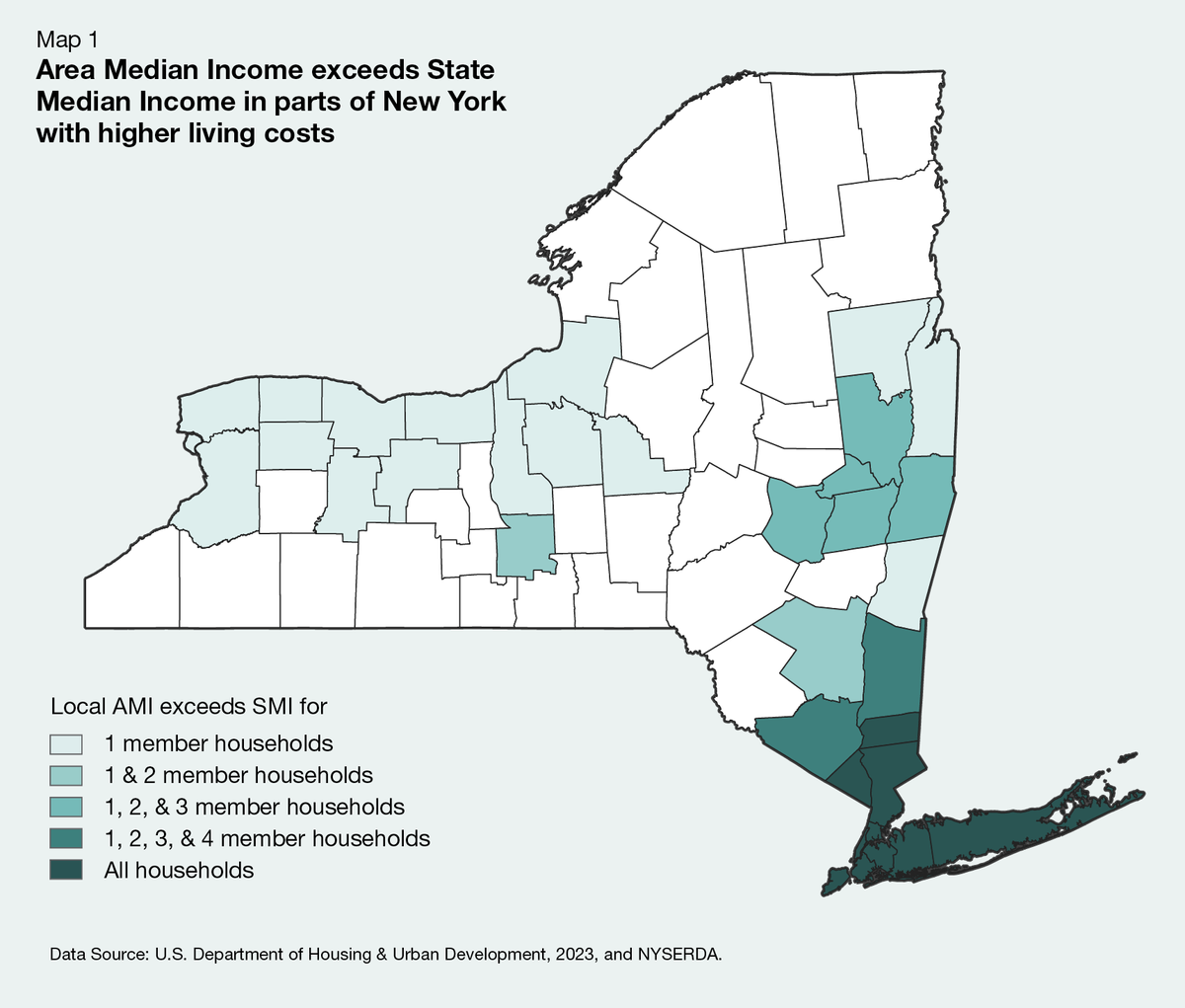
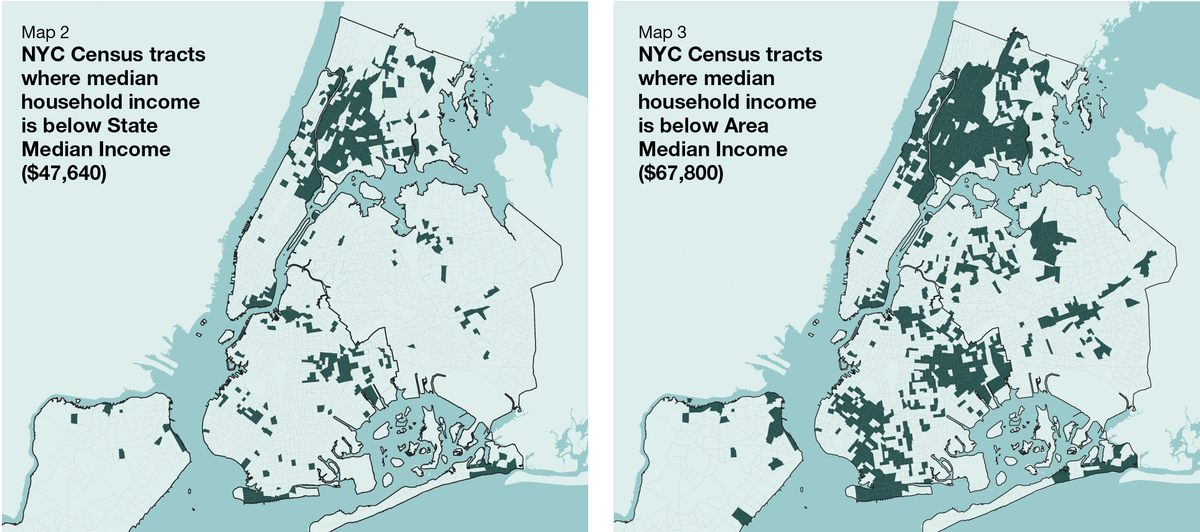
The distinction between AMI, which is calculated for smaller metropolitan areas and regions, and SMI, which is calculated for the entire State, is key to this inequity. For the average family in NYC, 60% State Median Income is $47,640 while 60% Area Median Income is $67,800—a difference of over $20,000.
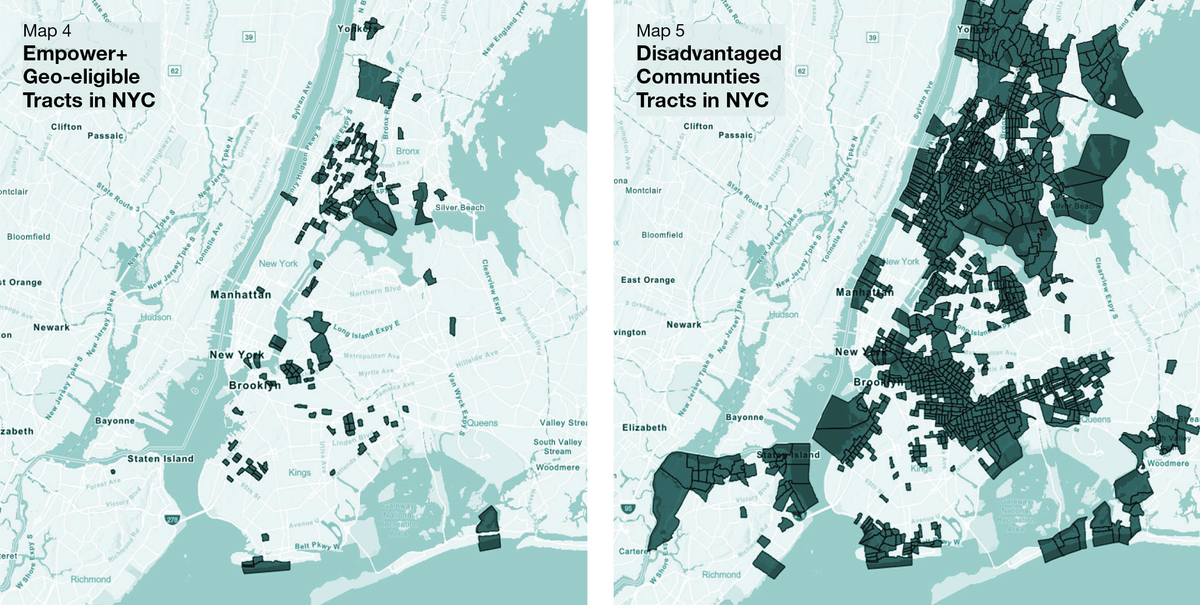
NYSERDA’s Empower+ geo-eligiblity pilot was a much needed attempt to streamline the application process and make Empower+ benefits accessible to more New Yorkers.
The criteria used to define geographic areas for the pilot were unnecessarily novel and narrow, and completely ignored the Climate Justice Working Group’s Disadvantaged Communities map.
NYSERDA’s recent decision to discontinue the pilot—based on the claim that “certain funding sources” for Empower+ do not allow for geo-eligibility—appears misguided and premature.
RECOMMENDATIONS
NYSERDA should immediately change the income threshold for the Empower+ low-income incentive from 60% of State Median Income to the greater of 60% SMI or 60% AMI. NYSERDA should petition the Public Service Commission to change the threshold if it is legally mandated as is claimed.
NYSERDA should change how they define low-income to match the Federal government’s IRA income definition at 80% AMI.
NYSERDA should reinstate its Empower+ geo-eligibility pilot—using whatever unrestricted funding sources are available—and base eligibility on the Disadvantaged Communities map. This would dramatically expand the population benefiting from this program, and quickly ramp up retrofits at a pivotal moment when the clock for slashing our emissions is rapidly ticking down.
